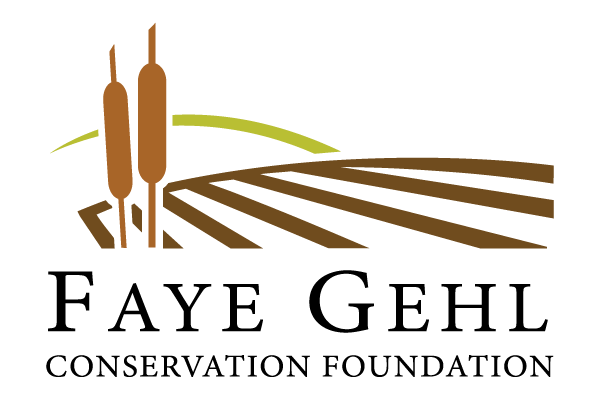Our Land
Stone Bank Farm

Located just north and east of village limits, Stone Bank Farm protects the small town feel of Stone Bank by preventing development and keeping agriculture near the town center. With the Oconomowoc River running through it and a restored 1890s barn nestled into the hillside, the Stone Bank Farm is eye-catching to anyone who drives by.
For years, the land on the Stone Bank Farm has been conventionally cropped with corn, alfalfa and soybeans—thereby depleting the nutrient base of the soil. In 2010, we began using cover crops and a no-till drill in an effort to improve the farm’s soil health and move entirely away from using chemical fertilizers, pesticides and herbicides.
What is a cover crop?
A cover crop is a grass or legume planted after harvest to suppress weeds, manage soil erosion and provide food for the soil microbes during the months when the primary crop is not growing.
What is no-till drilling?
No till drilling is a way of planting seeds (in pasture or as row crops) without disturbing the soil. In this process, the seed is drilled directly in to the ground without the need for tillage (i.e. the digging, stirring or overturning of the soil). No-tilling reduces soil erosion and leaves more food for the microbes thereby increasing soil fertility.
In Spring 2018, we will continue the conversion from conventional to organic agricultural techniques by planting the entire farm in pasture using diverse and nutrient-rich grass seeds. Within a few years, we will mob graze and raise certified organic beef cattle—similarly to what we are already doing on the Merton Hill Farm. Locals and visitors alike will have the opportunity to buy this organic beef at the Stone Bank Farm Market located just beyond our borders. Yum!
In addition to its agricultural land, the Stone Bank Farm has an expansive area of environmental corridor sitting on both sides of the Oconomowoc River as it winds its way from North Lake south to Okauchee Lake. In 2009, the Foundation actively restored this environmental corridor (including the shoreline) to reduce soil erosion and better filter storm water run-off.
History of Stone Bank Farm
Scottish immigrant John Ferguson arrived in Lake Country in 1844 and purchased 225 acres from the government under the Homestead Act. A beautiful stream sliced through the northern and western borders of his land—serving as a connector between two freshwater lakes. In 1854, Mr. Ferguson took advantage of the large American market for wheat (1/6 of which came from Wisconsin) by building a gristmill near this river so he could make flour from the neighboring farmers’ grain crops. A culvert was built to divert water from the river to the gristmill.
In the late 1890s, wheat began to decline and dairy became king. The gristmill operation shut down, and a barn was built in 1898 to house six cows. Approximately 10 years later, the Fergusons built an addition to the eastern side of the barn allowing them to milk 30 cows and have a few horses. By the 1950s, farming operations ceased and Mr. Ferguson’s descendants gained employment off farm.
Although neither the gristmill nor the culvert exist today, the original barn is still standing and is as beautiful and picturesque as ever—reminding those who pass it of our community’s farming roots.
Between 1844 and 2002, the original homestead of 225 acres dwindled in size to just 75 acres. John Ferguson himself donated 3 acres of his land to the Presbyterian Church upon which a new church was built for the local Scottish community. The church was dedicated in 1858 and is still standing today but is now the site of the Stone Bank Farm Market.
The Faye Gehl Conservation Foundation purchased the remaining 75 acres in 2002 from the Rogers Family (descendants of Mr. Ferguson). We are forever grateful to the Rogers Family for the opportunity to care for this beautiful piece of land.
